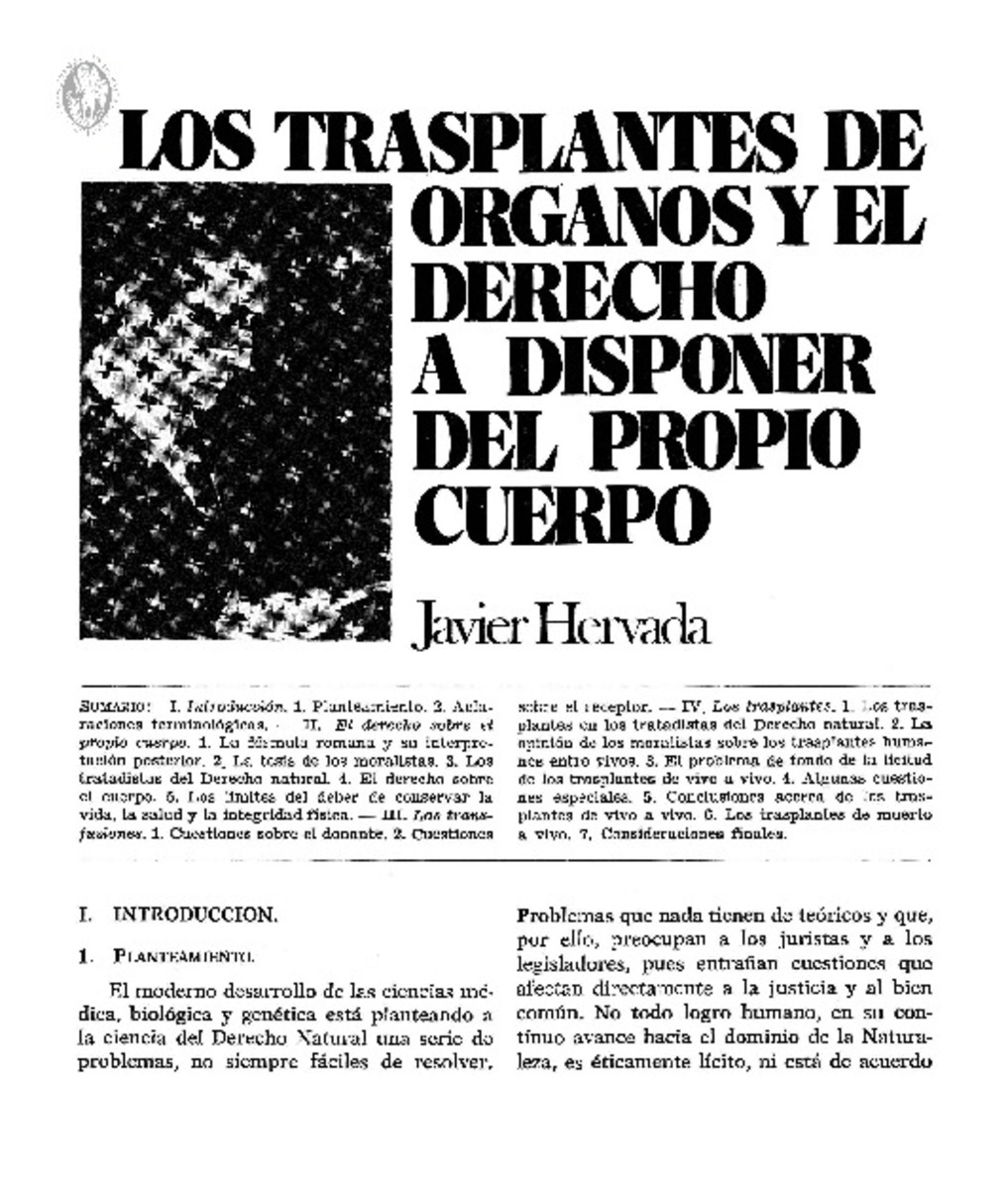Los transplantes de órganos y el derecho a disponer del propio cuerpo
Palabras clave :
Materias Investigacion::Derecho
Fecha de publicación :
1975
Editorial :
Servicio de Publicaciones de la Universidad de Navarra
Cita:
Hervada , Javier. ""Los transplantes de órganos y el derecho a disponer del propio cuerpo"". Persona y Derecho, 2 (1975) : 195-254.
Aparece en las colecciones:
Estadísticas e impacto
0 citas en

0 citas en

Los ítems de Dadun están protegidos por copyright, con todos los derechos reservados, a menos que se indique lo contrario.







